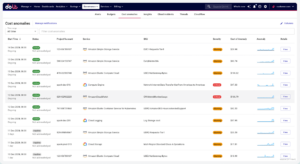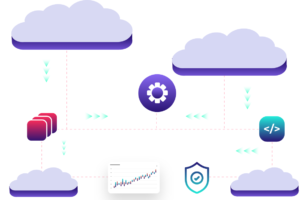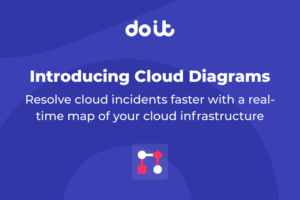How to Choose the Best Cloud Computing Providers for Your Business
Picture a fast-growing fintech start-up suddenly facing a surge in user transactions—but its on-premises infrastructure can’t keep up. The CTO has to make a big decision: which cloud computing provider can handle the company’s rapid growth while meeting the strict security demands of financial services? It’s not an easy choice. One cloud service provider (CSP) might have particularly advanced AI tools, while another may have developed more comprehensive compliance frameworks. Another could offer more competitive pricing structures for specific workloads. In reality, though, all major providers offer strong capabilities across these areas with varying strengths and specializations, making it even harder to choose.
This kind of dilemma happens in boardrooms and IT departments all the time. It highlights an important reality: choosing the right cloud provider is a major strategic move that can shape your company’s future.
As cloud providers continue to expand their capabilities, these decisions have only become more complex. Cloud services today go way beyond basic infrastructure, offering advanced analytics, AI tools, and even big data and industry-specific solutions. Deciding which provider is the best fit for your business takes careful thought, considering everything from technical features to how well it aligns with your long-term goals.
In this guide, we’ll break down the cloud provider landscape, looking at the top cloud services providers, their alternatives, and the key factors you need to consider. Whether you’re wondering if it’s time for cloud migration, moving forward with a major cloud deployment for the first time, or reevaluating your current setup, this guide aims to help you make the right call for your business.
“The Big Three” dominating the cloud computing landscape
Three major players dominate the cloud computing services market, each bringing its own unique strengths to meet different business needs and technical demands.
AWS
Amazon Web Services (AWS) continues to lead the pack in cloud market share with its massive range of services and proven reliability for enterprises. Its impressive global infrastructure, with multiple availability zones, ensures strong performance across regions. As one of the largest cloud providers, AWS is a go-to choice for businesses with complex architectures or strict compliance needs, like those in finance or healthcare. Its mature ecosystem includes advanced machine learning capabilities and powerful compute services like EC2, making it particularly attractive for organizations looking to implement artificial intelligence and AI-driven solutions or scale their computing resources efficiently.
AWS also stands out for its hybrid cloud solutions, allowing businesses to integrate on-premises infrastructure with cloud resources. Additionally, AWS offers built-in automated cost savings tools like S3 Intelligent Tiering, which automatically moves data between storage classes to optimize costs without performance impact. And with 65% of survey respondents reporting to McKinsey that their organizations are already regularly using generative AI, these capabilities are likely to be more relied upon in the near future.
Google Cloud
Google Cloud Platform (GCP) stands out for its cutting-edge innovation and outstanding data analytics capabilities. Backed by Google’s global fiber network, it delivers excellent networking performance. Its focus on open-source technologies, especially in containerization and GKE, makes it great for businesses looking for flexibility and scalability. Google Cloud’s pricing, with sustained use discounts, can save money on workloads that run consistently. It’s a real standout for data-heavy applications, with tools like BigQuery enabling real-time analysis of massive datasets without the hassle of infrastructure management.
Azure
Microsoft Azure has built a strong reputation for its easy integration with enterprise tools, hybrid cloud solutions, and top-tier Kubernetes offering in AKS. Companies already using Microsoft technologies love how easily Azure fits into their existing setup. Azure Arc takes it even further by offering consistent management across on-premises, edge, and multicloud environments. With solid support for Windows workloads and robust security features, Azure is a great option for businesses with complex compliance needs or a deep Microsoft ecosystem.
Alternative providers: what else is out there?
While the Big Three often steal the spotlight, the cloud provider landscape is much broader than just these major players. Specialized partners like DoiT are stepping up as key contributors to the space, changing the way organizations manage and use cloud resources. A second tier of established providers like Oracle Cloud and IBM offer solid alternatives.
These partners do more than just resell cloud services—they deliver complete solutions to tackle the challenges of cloud adoption and management. Cloud computing can be complex, and many organizations struggle with its challenges and escalating costs. However, partnering with a company like DoiT simplifies the process and provides valuable support.
DoiT’s approach gives you access to simplified procurement across different cloud providers, powerful cost optimization tools through its suite of proprietary applications, and expert advice on architectural decisions. DoiT’s world-class support team helps navigate the complexities of cloud environments, ensuring you maximize value while minimizing expenses. Beyond cost savings, this model helps solve one of the biggest challenges in cloud computing: turning complex capabilities into practical, real-world solutions.
Benefits of CSPs: why not build on-prem?

Choosing between cloud services and on-premises infrastructure isn’t just about comparing costs anymore. Cloud providers offer access to advanced technologies that would be too expensive or complicated to build yourself. And while on-premises solutions give you full control over your infrastructure, cloud services bring the flexibility businesses need to keep up in today’s fast-changing world.
With cloud services, companies can tap into global infrastructure without big up-front investments. This makes it easier to scale and expand into new markets quickly, without the hassle of setting up local data centers. Plus, cloud providers regularly invest in cutting-edge tools like machine learning platforms and edge computing. This model brings computing resources closer to the devices and users who need them, giving you instant, on-demand access to the latest innovations.
Should you go multicloud or hybrid?
Choosing between multicloud and hybrid strategies takes careful thought, balancing technical needs with business goals. For many organizations, a well-planned hybrid approach hits the sweet spot—keeping critical workloads on-premises while tapping into the cloud for innovation and scalability.
Hybrid and multicloud strategies often coexist in large enterprises. For instance, hybrid models can handle data-sensitive workloads across on-premises and a single cloud, while a multicloud approach distributes applications across multiple providers. These choices depend on factors like security, networking, cost, and provider-specific services.
Real-world workload allocation strategies
- Financial services companies might keep core transaction systems on-premises but use the cloud for customer-facing application development and analytics.
- Enterprises often run AI/ML workloads on Google Cloud for its specialized TPUs and ML frameworks, while using AWS for transactional databases due to its global latency performance and availability zone architecture.
Key considerations for multicloud decisions
- Regulatory requirements
- Geographic distribution
- Disaster recovery planning
- Networking costs and architecture
- Mergers and acquisitions
It’s also important to think about the operational side—managing multiple cloud environments requires a broader skill set. However, partnering with cloud providers that offer unified management tools and expertise across platforms can make this much more manageable.
Evaluating cloud providers: what really matters?
Picking the right cloud provider involves finding one that best aligns with your business goals and meets your tech needs. It should also offer the reliability, security, and scalability you need to thrive in a competitive market.
Performance, scalability, and flexibility
Evaluating cloud providers effectively means understanding both your current needs and how you plan to grow in the future. Start by analyzing your workloads thoroughly—look at resource requirements, usage patterns, load balancing needs, speed to implementation, and integration points. Think about how your applications will scale and how each provider’s infrastructure and tools support that specific growth. Patients Know Best leveraged DoiT’s cloud expertise to scale from 100,000 to over 3 million users during rapid growth, demonstrating how the right cloud infrastructure can support exponential business expansion.
When comparing providers, take a close look at their instance types and how they perform in real-world scenarios. Auto-scaling features are especially important for apps with fluctuating workloads. And don’t forget to consider geography and latency—these can have a big impact on the user experience. Make sure the provider’s capabilities align with your global business needs as well.
With digital transformation speeding up, tackling vendor lock-in early in your cloud strategy is key to staying scalable over the next 3 to 5 years. Here are some ways to keep your options open:
- Use container orchestration platforms like Kubernetes to keep workloads portable, so your applications can run smoothly across different environments.
- Leverage Infrastructure as Code (IaC) tools to standardize your infrastructure and make it easy to redeploy across providers.
- Adopt API abstractions to shield your apps from provider-specific quirks, making transitions easier if needed.
- Set up multicloud governance frameworks to standardize policies and security across environments without losing flexibility.
- Focus on cloud-agnostic data strategies to ensure your data stays accessible and easy to move—avoiding one of the toughest parts of switching providers.
Starting with these strategies from the get-go gives you more control over your cloud future and keeps you flexible as your business evolves, even while sticking with a primary provider for efficiency.
Alignment with industry and business needs
Different industries have their own unique challenges, and cloud providers need to address these with specialized features and compliance options. For example, tech companies often look for advanced deployment tools and solid API support to drive innovation and make integration easier. Financial services need high security and industry-specific certifications, while healthcare providers require full HIPAA compliance and secure ways to exchange data. Bdeo partnered with DoiT to optimize its insurance industry visual intelligence platform, achieving a 25% reduction in operational costs while maintaining the specialized security and compliance requirements needed for processing sensitive insurance data.
The right cloud provider will have proven experience in your industry, backed by relevant case studies and tailored solutions. Its roadmap should keep up with your industry’s growth, ensuring it can meet your current needs as well as your future goals. Having the right expertise and support for your specific field can make all the difference in successfully leveraging cloud technology for your business.
Pricing models and cost transparency
Understanding cloud pricing means looking beyond just basic instance costs to figure out the total cost of ownership. Pricing models can vary significantly, from simple pay-as-you-go options to more complex reserved instance plans. Organizations need to align these models with their usage patterns and budgetary needs. Paradox Interactive, for example, transformed its approach to cloud cost management by partnering with DoiT for enhanced cost transparency, allowing for better financial planning and optimized resource utilization without sacrificing performance for its gaming platforms.
It’s also worth noting that cloud pricing is competitive, and smart FinOps teams know how to use this to their advantage. By leveraging their partnerships, they can negotiate some pretty sizable discounts. This is especially true for large enterprises, as cloud providers are often willing to offer major discounts to win or keep their business.
Managing cost-effective strategies requires solid tools for tracking and optimization. Look for providers that offer in-depth cost analysis features, like detailed usage reports and predictive analytics. For larger organizations, being able to allocate costs across departments and projects is key. Through this, you can gain a better understanding of where resources are actively being used the most and make more informed decisions about future investments.
Smaller companies, on the other hand, might focus more on having straightforward billing and clear cost controls, which can be especially important for start-ups and smaller businesses working with limited budgets.
Regardless of company size, transparency around costs plays a major role when it comes to choosing the right cloud provider. Providers should be able to clearly outline their pricing structures and any potential additional fees to avoid surprises down the line.
Security and compliance features

When evaluating security, consider both the provider’s built-in cloud security features and how well they integrate with your existing tools. Cloud providers should offer strong and reliable identity and access management, along with secure encryption for data management both at rest and in transit. From data storage services and virtual machines to automation and integrating with your IT infrastructure, being able to monitor and respond to security events across different cloud setups is crucial. It’s especially important in hybrid and multicloud environments. Take Optessa, which collaborated with DoiT to migrate critical workloads back under its organizational control, significantly enhancing SOC2 compliance posture while maintaining operational effectiveness.
On the compliance side, make sure the provider meets your regulatory needs, including industry-specific certifications and regional standards. Good documentation and audit support from the provider can make staying compliant much easier, so it’s worth taking a close look at these factors.
Navigating cloud provider choices
Choosing and implementing the best cloud solution is much easier with the right guidance. A knowledgeable partner can help you compare options based on your specific needs and provide the tools and expertise needed for ongoing optimization. With this support, you can sidestep many of the most common mistakes and speed up your cloud adoption process.
Take, for example, an imaging solution company in the healthcare space that teamed up with DoiT’s management services to fine-tune its cloud architecture for better performance and cost efficiency. The result? A 40% drop in cloud storage spending and improved application performance, thanks to architectural improvements and automated optimization tools. This partnership didn’t simply provide access to cloud resources—it offered the strategic guidance needed for long-term success.
For enterprises facing increasingly complex cloud environments, DoiT offers a distinct advantage by serving as an extension of your engineering team—eliminating the need to build and maintain an in-house cloud economics function. Instead of dedicating valuable engineering resources to cloud cost optimization, governance, and architectural planning, businesses use DoiT’s specialized expertise to handle these critical but resource-intensive tasks.
Unlike cloud provider account teams that are focused on pushing their own solutions and driving up your spend, DoiT gives you unbiased advice across AWS, Google Cloud, and Microsoft Azure. With our multicloud optimization approach, we make sure your workloads run on the platforms that best fit your business needs—not just the one a vendor wants to sell you. Our engineers help you choose the right technologies for each use case while avoiding expensive vendor lock-in, so you stay flexible for the future.
The right cloud partner combines technical expertise, industry know-how, and proven tools to help you get the most out of your cloud investment. This partnership can help you keep costs under control while making sure your cloud infrastructure adapts as your business grows.
Learn how you can unlock the full potential of your cloud ecosystem—no matter which provider you use. With the right strategy and support, your business can leverage cloud computing to drive innovation, boost efficiency, and accelerate growth. DoiT can help you find the right solution. Schedule a call with our team today to see how we can take your cloud ecosystem to the next level.


